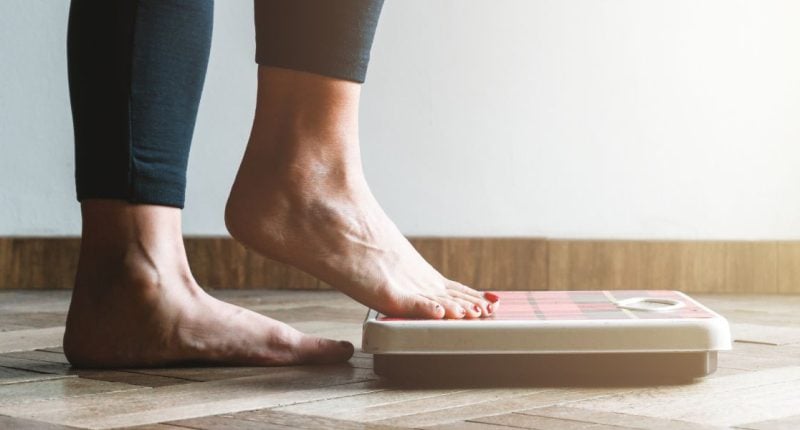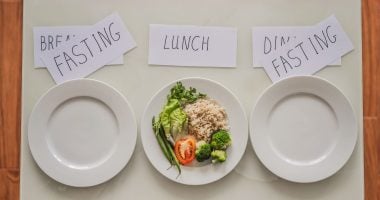You may have heard about GLP-1 which is the hormone at the heart of weight loss medications like Ozempic, Wegovy and Mounjaro.
These medications have been heralded for their ability to suppress appetite and aid weight loss, but did you know that GLP-1 is a natural hormone you can stimulate without injections or prescriptions?
Glucagon-like peptide-1 (GLP-1) plays a vital role in regulating metabolism, the intricate system responsible for managing your energy, weight, and blood sugar levels.
With the right habits, you can enhance your body’s natural GLP-1 production, helping you manage weight and maintain overall health sustainably.
Understanding GLP-1s and their role
GLP-1 is a hormone released in the gut in response to eating.
It has several important roles:
- Regulating blood glucose: GLP-1 increases insulin secretion and reduces glucagon levels, keeping blood sugar steady.
- Controlling appetite: It signals your brain to reduce hunger and enhances feelings of fullness.
- Slowing digestion: By delaying gastric emptying, GLP-1 ensures a steady release of nutrients and energy.
- Promoting energy balance: GLP-1 helps the body decide when to store or use energy.
Medications that mimic GLP-1 can be effective for weight loss, but their side effects such as nausea, muscle loss, and gastrointestinal discomfort make them unsuitable for everyone.
Research published in The Lancet warns that 40% of weight lost using these medications is lean muscle mass which can be difficult to regain.
Additionally, weight often returns once the medication is discontinued.
Natural methods of enhancing GLP-1 not only sidestep these issues but also offer long-term benefits for metabolic health.
- Rise of dangerous weight loss black market sparks concern
- W8Buddy app paves the way for enhanced weight management in the NHS
- MHRA: 68 people hospitalised with weight loss injections
How to naturally boost GLP-1 levels
Research suggests that lifestyle choices can significantly impact GLP-1 production and effectiveness.
1. Optimise your diet
Excessive sugar and refined carbohydrates flood your system with glucose, causing blood sugar spikes and crashes, so you want to reduce digestible glucose.
“Glucose rollercoasters” disrupts hormonal balance, including GLP-1.
Replacing sugary snacks with complex carbohydrates like whole grains, beans, and lentils can help stabilise blood sugar levels and improve GLP-1 activity.
2. Prioritise high-protein foods
Foods such as eggs, fish, poultry, and plant-based proteins are known to stimulate GLP-1 secretion.
Studies show that meals high in protein can significantly increase satiety by enhancing GLP-1 release.
Starting your day with a protein-rich breakfast sets the tone for steady energy throughout the day.
3. Increase fibre intake
Dietary fibre, particularly from fruits, vegetables, and whole grains, slows digestion and promotes the release of GLP-1.
Research from The American Journal of Clinical Nutrition highlights that fibre-rich diets not only support GLP-1 but also improve insulin sensitivity and gut health.
4. Engage in regular physical activity
Exercise is a powerful, natural stimulant for GLP-1. Studies in Diabetes Care have shown that both strength training and aerobic exercise can enhance GLP-1 levels improving appetite regulation and glucose metabolism.
Even simple activities like a brisk 10-minute walk after meals can help stimulate GLP-1 release.
5. Prioritise sleep
Sleep and hormone regulation go hand in hand. Poor sleep disrupts GLP-1 production and increases levels of ghrelin, the hormone that stimulates hunger.
Research from The Journal of Clinical Endocrinology & Metabolism suggests that getting 7–8 hours of quality sleep each night supports hormonal balance and reduces cravings.
6. Manage stress
Chronic stress elevates cortisol which can interfere with GLP-1 production and other metabolic processes.
Incorporating stress-relieving practices like mindfulness, yoga, or breathing exercises can help maintain a balanced hormonal environment.
- Reason why GLP-1 receptor agonists impact muscle mass explained
- Mounjaro comes out top in battle of the weight loss drugs
- Intermittent Fasting: Guide to Fasting and How it Works
Habits for long term GLP-1 optimisation
Changing your lifestyle can feel overwhelming but habit formation is the key to long-term success.
By linking new behaviours to existing routines – a technique known as habit stacking – you can make sustainable changes.
For example, pair your morning coffee with a short walk or add a handful of fibre-rich seeds to your breakfast.
It’s also important to rely on habits rather than willpower.
Research from Psychological Science highlights that willpower is a finite resource which diminishes throughout the day.
In contrast, habits are automatic behaviours that require less mental effort allowing you to maintain healthy routines effortlessly.
Boosting GLP-1 naturally isn’t just about appetite control; it’s about creating a lifestyle that supports your body’s natural processes.







